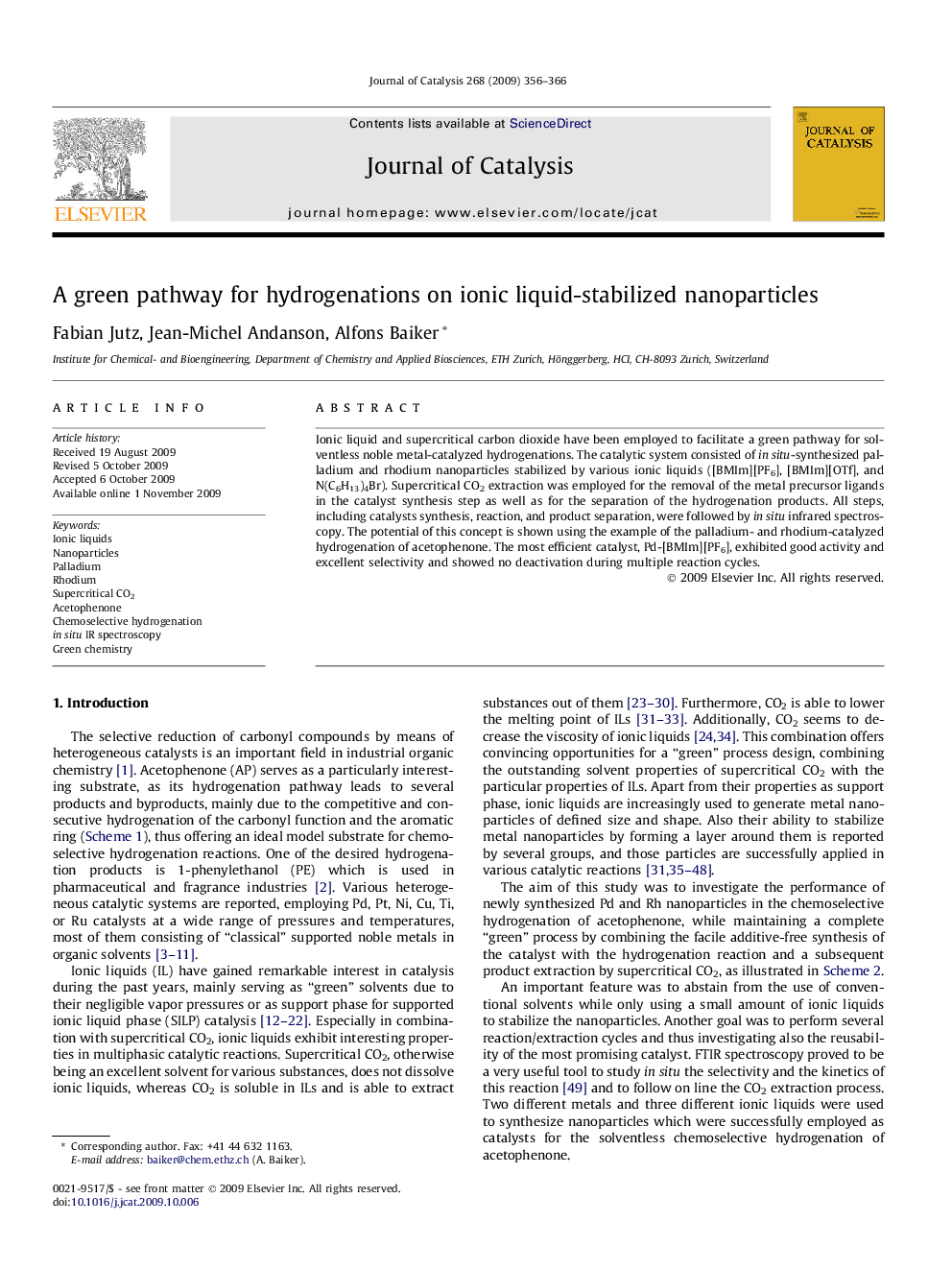| Article ID | Journal | Published Year | Pages | File Type |
|---|---|---|---|---|
| 61978 | Journal of Catalysis | 2009 | 11 Pages |
Ionic liquid and supercritical carbon dioxide have been employed to facilitate a green pathway for solventless noble metal-catalyzed hydrogenations. The catalytic system consisted of in situ-synthesized palladium and rhodium nanoparticles stabilized by various ionic liquids ([BMIm][PF6], [BMIm][OTf], and N(C6H13)4Br). Supercritical CO2 extraction was employed for the removal of the metal precursor ligands in the catalyst synthesis step as well as for the separation of the hydrogenation products. All steps, including catalysts synthesis, reaction, and product separation, were followed by in situ infrared spectroscopy. The potential of this concept is shown using the example of the palladium- and rhodium-catalyzed hydrogenation of acetophenone. The most efficient catalyst, Pd-[BMIm][PF6], exhibited good activity and excellent selectivity and showed no deactivation during multiple reaction cycles.
Graphical abstractPalladium and Rhodium nanoparticles were synthesized in different ionic liquids and subsequently used as catalysts in solventless hydrogenations. Supercritical carbon dioxide served for the removal of metal precursor ligands and product extraction.Figure optionsDownload full-size imageDownload high-quality image (100 K)Download as PowerPoint slide
